Current Research Projects
The Rehabilitation Engineering Laboratory pursues three research lines, ranging from basic research on the mechansims of sensorimotor control and recovery following neurological injury, to improved tools for assessment, therapy and long-term assistance.
This line of research focuses on the investigation of mechanical properties of joints under neural control, as well as the neural and behavioral mechanisms underlying sensorimotor control and recovery following neurological injury. It involves studies with robotic tools and non-invasive neuroimaging in humans and animal models. We work closely with collaborators in movement science, neuroscience and clinical neurorehabilitation.
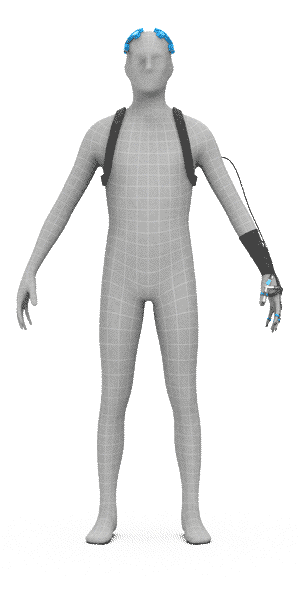
Accessing the Brain Using Functional Near-Infrared Spectroscopy (fNIRS)
Functional Near-Infrared Spectroscopy (fNIRS) is an emerging technology to non-invasively assess brain function by measuring the attenuation of light sent through the tissue. In a Brain-Computer Interface (BCI) application, fNIRS can be used to guide recovery after stroke. In this project, a wearable and modular fNIRS system has been developed for stroke rehabilitation in home environment.
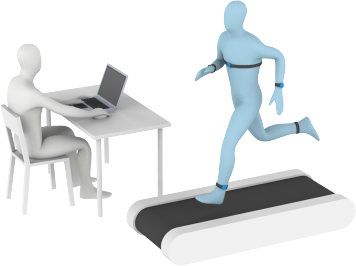
Precision sensorimotor neurorehabilitation through personalized stimulation loops – StimuLOOP
Stroke and Parkinson’s disease (PD) often result in gait impairment, reducing the mobility and the independence of affected people. Effective treatments to improve gait are available, but treatment response differs strongly between patients because of heterogeneity in deficit phenotypes, and often fails. The goal of this project is to address this heterogeneity by providing personalized gait rehabilitation for stroke and PD patients, both through real-time feedback during rehabilitation sessions and modulation of sleep.
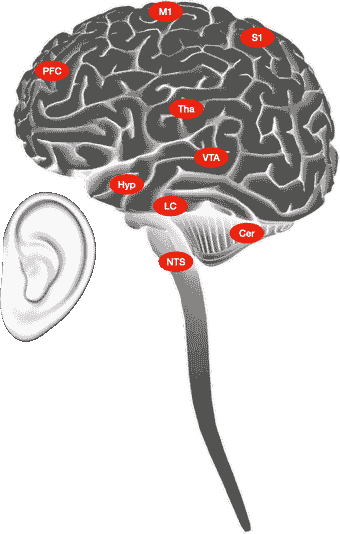
Neuroscience-inspired closed-loop stroke rehabilitation system: SmartVNS
Stroke is the most common cause of neurologic disability and more than 8 million people require rehabilitation after a stroke every year. SmartVNS is a novel, neuroscience-inspired rehabilitation system aiming to specifically target the core issue of the disability - the injured brain and the affected neuro-motor pathways. It is a hardware-software system comprising of wearable motion trackers and a form of closed-loop, non-invasive brain stimulation.
Assess
Clinical assessments have the potential to provide valuable insights on the effect of different therapeutic approaches. However, they are time-consuming to administer and suffer from a number of limitations, such as subjectivity, flooring/ceiling effects and poor sensitivity. The aim of this line of research is to provide clinicians and therapists with objective and sensitive tools to precisely quantify impariments, both motor and somatosensory, in the clinic as well as in the home environment.
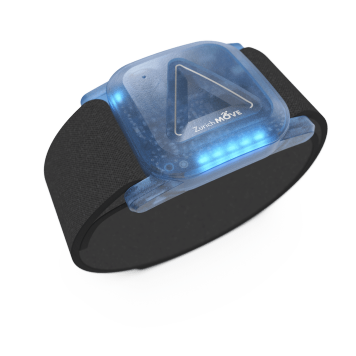
Long-Term Activity Monitoring
Neurological diseases such as stroke, Parkinson’s disease or spinal cord injuries can cause various forms of motor disabilities. Wearable sensors are a promising approach to collecting physical activity data of patients in order to objectively monitor their recovery outside of a clinical environment as well as to investigate the transfer of therapy to activities of daily living.
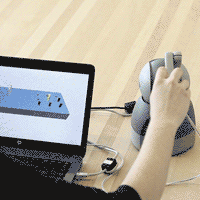
Assessment of Upper Limb Function with the Virtual Peg Insertion Test
The Virtual Peg Insertion Test is a tool for the objective assessment of grasping and manipulation function. It combines a commercial haptic device, an instrumented handle and a virtual reality environment. Performance and impariment related parameters can be extracted from position and grip force traces to obtain an objective evaluation of upper limb function. Clinical studies are ongoing with patients suffering from different neurological disorders.
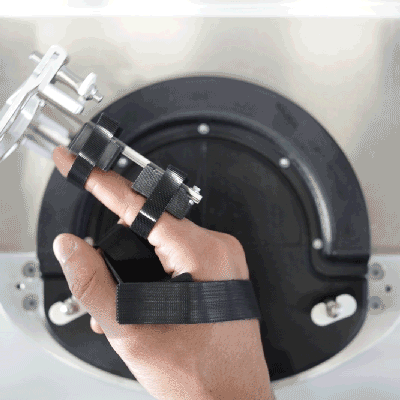
Robotic Somatosensory Assessment of Hand Function
Somatosensory deficits following neurological injury such as stroke are poorly investigated and rarely addressed during rehabilitation, despite the importance of somatosensory input in motor learning and control. This can be at least partially explained by the lack of quantiative and sensitive assessment tools. Our aim is to develop quantitative and sensitive assessment tools based on robotics technology, allowing to diagnose and monitor somatosensory deficits, compare different therapies and develop assessment-driven somatosensory therapy for a more effective and complete recovery.
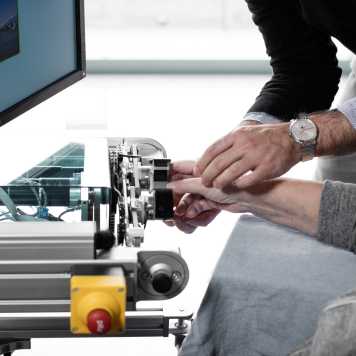
Robot-Assisted Rehabilitation and Assessment of Hand Function
Stroke survivors suffering from hand impairment are often severely limited in the execution of activities of daily living. We are developing and clinically evaluating robotic devices to train and assess motor and sensory hand/forearm function. These systems can complement conventional therapy, and allow for unsupervised rehabilitation in the clinic and at home.
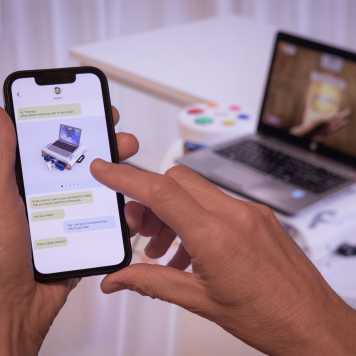
RehabCoach: AI-based app for therapy at home
Individuals with upper limb impairments are often severely limited in executing activities of daily living. RehabCoach combines a smartphone application with rehabilitation technologies to support neurological patients in home-based therapy without direct therapist supervision. Through interaction with virtual coaches, RehabCoach assists patients in their rehabilitation journey outside of the clinical setting by increasing motivation to train and ultimately enhancing therapy outcomes.
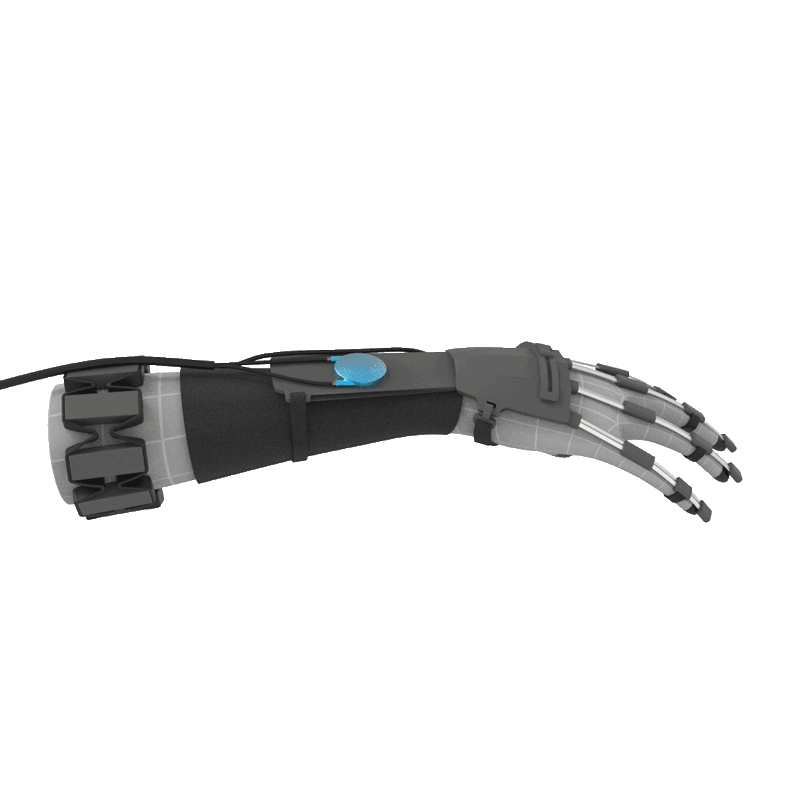
RELab tenoexo: a Robotic Hand Orthosis for Therapy and Assistance in Activities of Daily Living
The RELab tenoexo is a lightweight, fully wearable robotic hand orthosis for grasping assistance in people with sensorimotor hand impairment. Several grasp types embedded in a user-friendly design enable to support a large range of daily hand activities and/or therapy tasks. It can be tailored to the needs of individual users in terms of intention detection strategy, physical attachment system, and size. The pediatric version PEXO further allows for its application in therapy with children.
Future Health Technologies
RELab is part of the Future Health Technologies (FHT) program as the Singapore-ETH Center. We develop novel health technologies for stroke rehabilitation leveraging on scalable digital technologies to transform the healthcare system towards a community-based and patient-centric model along the continuum of care.